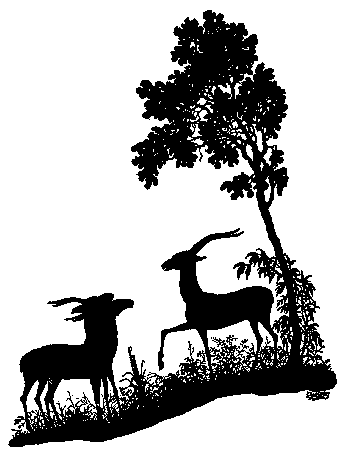By Christine B. Whelan, The Washington Post, November 11, 2008
Washington, USA -- Picture this: You're staring at the kitchen trash and feel a surge of frustration. You just saw your partner stuff one more thing into the already overflowing bin without making a move to empty it. Ready to pick a fight, you're about to lash out with an angry indictment of your partner's overall worth as a human being. Then you stop.
You've been taking classes in something called mindfulness, so you take a deep breath and step back. You identify and feel your emotions, and then let them pass. You find the real source of your frustration: It's not the trash; it's that you don't feel appreciated around the house. Instead of an opening volley of obscenities, you consider how to resolve the broader issue.
Sound too New Age-y to work in your household? It might be worth a try: Researchers at major universities are exploring the benefits of Buddhist mindfulness techniques to help families increase feelings of closeness and decrease relationship stress -- and the results are promising. Just as the latest Hollywood incarnation of the Incredible Hulk keeps his green-hot anger under control with daily meditations, so are some people learning to manage emotions in their relationships.
In mental health terms, mindfulness is the awareness that emerges from focusing on the present and the ability to perceive -- but not judge -- your own emotions with detachment; it enables you to choose helpful responses to difficult situations rather than reacting out of habit. While Western thought separates religion and science, Buddhists see mindfulness as both a spiritual and psychological force.
Mindfulness isn't simply about calming down, and it's certainly not about giving in. It's about recognizing that you're tired as you go home on a crowded Metro train, so that when somebody bumps into you, you decide to say, "Excuse me!" instead of pushing back. It's about picking an effective way to discipline your teenager for staying out until 3 a.m. rather than responding like an angry child yourself.
Mindfulness therapies for depression have had well-documented success: Depressed people focus on the negatives, locking themselves into a destructive thought cycle that makes the depression worse. Mindfulness training helps them become aware of this cycle and snap out of it.
The same thing is true for couples gearing up for a rehash of an old argument, says Robyn Walser, a psychologist and co-author of "The Mindful Couple" (to be published in February by New Harbinger). "If you are aware of life as a process, not as an outcome, you step back from the argument. "
These techniques of awareness can also prove helpful for children with behavioral problems, says Randye Semple, an assistant professor of clinical psychiatry at the University of Southern California. "We teach the kids to find choice points," she says, showing them that "you can take time to breathe and look at the situation, and then you can choose not to be angry."
Semple begins to train 9- to 12-year-olds in mindfulness by having them focus intently on what they're doing during routine activities such as brushing teeth: maintaining constant awareness of the position of the brush, the taste of the toothpaste, the motion of their hands. After completing her 12-session program, Semple says, children report lower levels of anxiety and are less likely to act out.
Semple encourages parents to demonstrate attentive choices: "Children whose parents are mindful will also be more mindful." Researchers are planning to expand mindfulness training to include more-difficult children, such as those suffering from post-traumatic stress disorder.
Starting Small
Some people are naturally more skilled at these techniques than others, but researchers say that mindfulness can be taught. It's like muscle training, says Jim Carson, a psychologist at Oregon Health & Science University.
Short daily meditations, in which you learn to anchor your attention in the present moment by focusing on the feeling of the breath moving in your body, are good for beginners, he says. Then, "begin to pay attention to the times you share with your partner when you feel connected -- what's going on in that moment. Tune in and learn from that." He also suggests reversing that exercise to pay attention to sources of stress in your relationship and keeping a brief journal of those feelings.
This kind of observation can help you prevent an argument from beginning in the first place. "It's an early-warning system. You are able to become aware sooner of the tension rising," says Christopher Montone, director of the Shambhala Meditation Center in Cleveland Park.
Kirk Warren Brown, an assistant professor of social psychology at Virginia Commonwealth University, co-developed a 15-point mindful attention awareness scale (see box) and has used it to test the levels of mindfulness of college students in romantic relationships. He has conducted two studies that suggest increased mindfulness correlates with overall relationship happiness.
In the first, he found that men and women are equally likely to be mindful, and if one person in the relationship is mindful, both members of the couple can benefit.
In the second study, Brown asked longtime couples to discuss a contentious issue in the relationship while being observed in his lab. Those who scored higher on the mindfulness scale were less anxious and less hostile after having such simulated conflicts with their significant others, he found.
"Mindfulness tends to inoculate people against feeling negative thoughts in the first place. You go into the conflict with less anxiety and hostility, and mindfulness seems to prevent those symptoms from arising," Brown says.
Mutually Beneficial
Carson finds that couples who practice mindfulness together can benefit not only from the individual attentiveness skills but also from the fact that they are sharing a new experience. "The practice of mindfulness together is a way that couples feel that they are deepening their relationship."
Even if only one partner is trying, the couple still benefits, he says. "If one partner is accepting and open, it's very hard for the other partner to push against that."
To an observer it might look as if the more mindful spouse is likely to lose an argument, but Walser says: "We don't advocate that people become carpets to be walked all over. There's a difference between accepting what you feel and think and allowing someone else to always have their way." Walser notes that this increased awareness can help individuals see when their relationship is in serious distress.
"I don't think it's a cure-all, but we can say with confidence that there's an emerging literature that suggests that mindfulness can help people re-regulate their body and their behavior," says Ruth Quillian-Wolever, an assistant professor of psychiatry and the research director at the Duke Integrative Medicine practice at Duke University, who has led studies of behavior change through mindfulness.
Although Buddhist ideas are at the core of mindfulness and meditation practices, psychologists usually separate the religious aspects from the clinical practice of mindfulness. "We acknowledge the source of the training, but it's not religiously grounded. These are practical skills that are present in all wisdom and spiritual traditions," says Carson.


